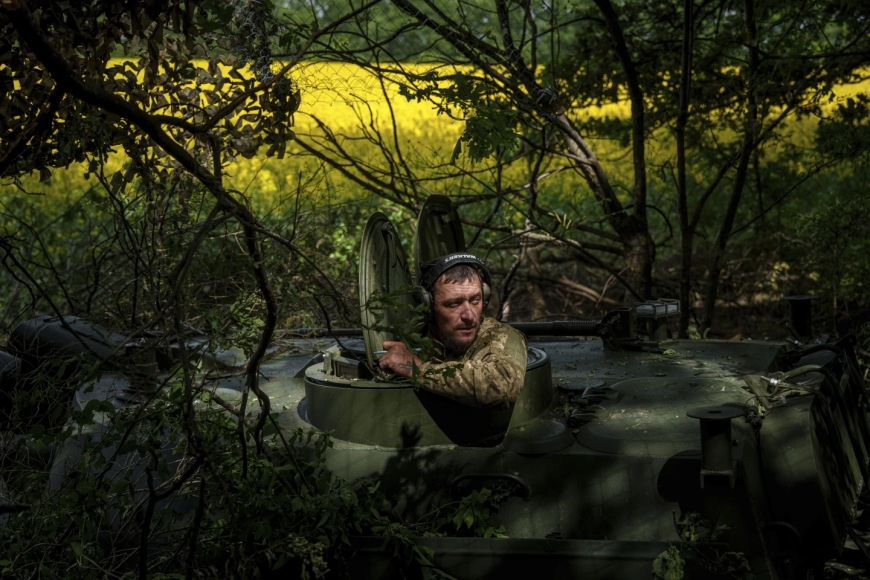Ukraine Employs Flexible Defense Strategy Amid Waiting for Western Ammunition Supplies

Ukrainian firepower has seen improvements since U.S. lawmakers approved a crucial military aid package this spring, though the pace of these enhancements has not been sufficient to fully counter the Russian offensive in eastern Ukraine. While the influx of Western munitions has helped reduce Kyiv’s significant artillery disadvantage, Moscow’s forces continue to gain ground along the front line, bolstered by the advantageous summer conditions. Ukraine remains on the defensive in the Donetsk region, where Russian troops are inflicting heavy losses during Ukrainian rotations and edging closer to vital supply routes.
To manage these challenges, Ukraine has adopted a flexible, bend-but-don’t-break strategy to buy time until more Western weapons and ammunition can reach the front lines. This approach involves ceding some territory to fight from stronger defensive positions, as explained by senior Ukrainian military leaders, soldiers, and analysts.
Russia’s Shrinking Munitions Advantage
New weapons and ammunition have been gradually arriving since U.S. President Joe Biden approved the aid package in April. However, it will take weeks or even months for Ukraine to fully replenish its stocks. Ivan Havryliuk, Ukraine’s first deputy minister of defense, noted that Russia’s artillery advantage has decreased from 7-to-1 at the start of the year to 5-to-1 now, but emphasized the need for more support, including 130 F-16 fighter jets expected later this year or early next.
Ivan Sekach, a press officer for the 110th Brigade, reported that new shells have improved their stocks by 75% compared to last winter. However, the supplies are insufficient to hold off Russia’s advances, with Sekach noting, "We need four times this amount to operate without counting each shell and prioritizing what to hit."
Oleksandr, a deputy battalion commander for the 47th Brigade, highlighted the need for more anti-tank and anti-aircraft missiles. He explained that while they receive ammunition in portions, it is not enough to accumulate the necessary stockpile.
Ukraine’s “Elastic Band” Strategy
Ukraine’s strategy involves an elastic defense to buy time until they are better armed. This approach contrasts with the prolonged battle for Bakhmut, where heavy casualties were incurred to avoid ceding ground. By retreating to better-defended positions, Ukrainian forces can fight more effectively and save personnel.
Dylan Lee Lehrke, an analyst with military intelligence think tank IHS Jane’s, noted, "Time is in the favor of Ukraine and thus the rationale of an elastic band: You can cede a little territory and gain a little time." This strategy has been instrumental in combating the Russian offensive more efficiently, although Ukrainian forces remain cautious about overconfidence.
The Perils of Resupplying the Front
Russia’s improved targeting of Ukrainian supply routes is impacting logistics significantly. Frequent drone strikes on supply lines necessitate constant adjustments to delivery schedules. In some areas, armored vehicles and drones are now essential for delivering ammunition.
Ninja, a soldier with the 28th Brigade in Bakhmut, described the challenges, noting that drivers must know the terrain perfectly to navigate safely under night vision. The complexity of supply delivery has increased, with units forced to rely more on drones and reduced frequency of armored vehicle deliveries.
Deadly Rotations
Russian targeting has become more precise, especially during troop rotations, leading to significant Ukrainian casualties. One unit near Chasiv Yar reported that a quarter of its casualties occur during these vulnerable periods. Russia’s persistent use of drones makes it nearly impossible for Ukrainian troops to move undetected.
Tor, the commander of the Kotyky unit, highlighted the difficulties, stating, "All day and night they are flying in the sky and observing us, it’s impossible to move without being seen." Troops often have to run in open areas to find cover, making them easy targets.
As Ukraine continues to adapt its strategies and await further Western support, the conflict remains intense, with both sides seeking to gain the upper hand. The outcome hinges on the timely arrival and effective use of new supplies, along with the resilience and tactical flexibility of Ukrainian forces.













































